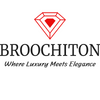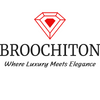Frequently Asked Questions
1. What are some emerging trends in fashion jewelry design?
2. What innovative materials are being used in fashion jewelry?
3. How is digitalization impacting the jewelry shopping experience?
4. What role does cultural fusion play in jewelry design?
5. How are emotional connections represented in fashion jewelry?
Fashion jewelry has always been a vibrant and expressive part of personal style, but the future promises to elevate that expression through innovative designs and materials. As we move further into the 21st century, trends and technologies continuously evolve, paving the way for exciting developments in this industry. In this article, we will explore the future of fashion jewelry, highlighting emerging trends in design, sustainable materials, technological advancements, and the impact of digitalization on the jewelry landscape.
New Trends in Design
Design is at the forefront of fashion jewelry's evolution. As consumer tastes evolve, designers are experimenting with unique concepts that push traditional boundaries. Here are some key design trends that are shaping the future of fashion jewelry:
Minimalist Aesthetics
The minimalist trend is gaining traction, featuring clean lines, simple forms, and understated elegance. This design philosophy often uses negative space as a fundamental element, creating timeless pieces that compliment a wide variety of outfits. Minimalist jewelry focuses on the beauty of simplicity, enhancing personal style without overwhelming it.
Asymmetry and Abstract Forms
Breaking away from traditional symmetrical designs, fashion jewelry is embracing asymmetry and abstract forms. This trend allows for innovative expression, with artisans crafting pieces that reflect individuality and creativity. Asymmetrical earrings, rings, and necklaces can create striking visual impact, making them perfect for statement-making fashion choices.
Layering and Stacking
Layering has become a celebrated practice in jewelry styling. The future holds exciting possibilities for stacked rings, layered necklaces, and mixed-media bracelets, where consumers can curate their collections to suit their mood or attire. This trend encourages personalization and speaks to the growing desire for unique style narratives.
Innovative Materials Transforming Jewelry
The materials used in fashion jewelry are evolving, pushing the envelope of what we traditionally associate with adornment. New technologies and a focus on sustainability are creating exciting opportunities for designers and consumers alike.
Eco-Friendly Materials
With increased awareness of environmental impact, many designers are turning to sustainable and eco-friendly materials. Options such as recycled metals, lab-grown gemstones, and biodegradable materials are becoming more prominent. These choices not only reduce the carbon footprint of jewelry-making but also resonate with consumers looking to make eco-conscious purchases.
3D Printing
3D printing technology is revolutionizing the jewelry-making process. Designers can now create intricate, customizable pieces that were once impossible to produce using traditional methods. This technology enables rapid prototyping and reduces waste, making it an appealing option for sustainable fashion enthusiasts. Moreover, customers can participate in the design process, choosing colors, sizes, and shapes that reflect their personal style.
Smart Jewelry
The integration of technology in fashion jewelry is an exciting frontier. Smart jewelry combines aesthetic design with technological features, offering wearers not only beauty but also functionality. From fitness-tracking capabilities to notifications linked to smartphones, smart jewelry elevates traditional adornments into multi-functional pieces that blend seamlessly with modern lifestyles.
Digitalization and the Impact of Social Media
The digital age has transformed how consumers interact with fashion jewelry. Social media platforms have become powerful tools for brand visibility and customer engagement, compelling jewelry brands to adapt their strategies to stay relevant. Here’s how digitalization is reshaping the jewelry landscape:
Augmented Reality Try-Ons
Virtual try-ons powered by augmented reality technology are gaining popularity. Customers can visualize how different pieces of jewelry will look on them without leaving their homes. This technology enhances the shopping experience, providing immediate gratification and reducing the likelihood of returns, as consumers can make informed purchasing decisions based on digital representations.
Influencer Marketing
Influencer marketing has taken the jewelry industry by storm. Brands are partnering with influencers to showcase their collections, gaining access to wider audiences. Authentic reviews and stylings from popular figures help build brand credibility and drive consumer interest. As social media continues to evolve, influencer collaborations will remain a staple in fashion jewelry marketing strategies.
Online Customization and Personalization
Many jewelry retailers are integrating online customization features, allowing customers to create personalized designs. This trend reflects a shift toward a more engagement-driven retail experience where consumers can express their personalities and stories through customized pieces. From fonts to gemstones, the possibilities are endless, giving rise to unique offerings that cater to individual preferences.
The Fusion of Cultures in Jewelry Design
The globalization of fashion has led to a fascinating fusion of cultural influences in jewelry design. Designers are drawing inspiration from various traditions, resulting in unique blends of styles that celebrate diversity. Here’s how cultural fusion is transforming fashion jewelry:
Traditional Techniques and Modern Sensibilities
Innovative designers are reinterpreting traditional jewelry-making techniques from various cultures and combining them with contemporary designs. This fusion creates uniquely crafted pieces that pay homage to historic craftsmanship while appealing to modern sensibilities. Such designs not only tell cultural stories but also resonate with consumers seeking authenticity in their fashion choices.
The Global Gemstone Market
The increasing accessibility of gemstones from across the globe has opened up new possibilities for jewelry designers. As sustainability becomes a focal point, ethically sourced gems are gaining traction, highlighting the importance of traceability and responsible sourcing. Consumers are more informed than ever about the origins of their jewelry, pushing brands to commit to transparency.
Emotional Connections Through Jewelry
Jewelry has always held sentimental value, but the future promises even deeper emotional connections between consumers and their adornments. Here’s how this trend is manifesting in the fashion jewelry landscape:
Storytelling Through Design
Brands are increasingly focusing on storytelling as a way to connect with customers emotionally. Each piece of jewelry can reflect personal journeys, relationships, or milestones, allowing wearers to carry their stories with them. By incorporating narratives into their designs, brands foster a deeper emotional connection with consumers, making each piece more meaningful.
Symbolism and Identity
As consumers become more conscious of their identities and personal growth, jewelry will increasingly symbolize life experiences, values, and beliefs. Customizable pieces that reflect individual stories and milestones, like anniversaries or achievements, will continue to rise in popularity. This trend reinforces the notion that fashion jewelry goes beyond mere adornment; it becomes an extension of the wearer's persona.
The Future of Shopping Experience
Shopping for fashion jewelry is poised for significant changes in the coming years. Enhanced experiences built on the foundations of technology and personalization will redefine how consumers interact with brands.
Enhanced Customer Engagement
Retailers will increasingly adopt omnichannel strategies that blend online and offline shopping experiences. In-store events featuring virtual try-ons, personalized consultations, and exclusive releases create buzz and engagement around products. This hybrid shopping experience helps build community and allows consumers to feel more connected to the brands they support.
Use of AI and Data Analytics
Artificial intelligence and data analytics are transforming the retail landscape by providing insights into consumer behavior. Brands can leverage this data to create personalized experiences, curate collections based on consumer preferences, and target marketing efforts more effectively. This level of customization will ultimately lead to stronger brand loyalty.
Engaging with the Future: What Lies Ahead
The future of fashion jewelry is bright, filled with innovative ideas and a focus on sustainability, technology, and personalization. As designers continue to push the boundaries of what is possible, consumers can look forward to a world where every piece of jewelry tells a story, resonates with values, and embodies individuality.
As we embrace these trends and developments, the relationship between jewelry and the wearer will deepen, creating a tapestry of meaningful connections. Fashion jewelry will no longer be merely an accessory, but rather a celebration of identity, creativity, and sustainability. The journey ahead is not just about adornment; it's about actively contributing to a richer, more conscious approach to style.





Leave a comment